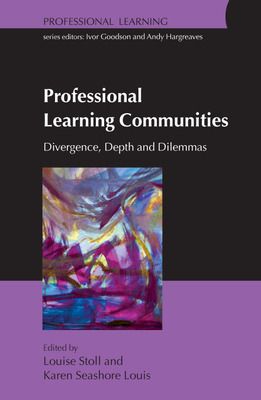Professional Learning Communities: Divergence, Depth and Dilemmas
Receive via shipping:
- Colour, print bound version of the complete text
Acknowledgements
List of contributors
List of figures and tables
Professional learning communities: Elaborating new approaches
Part 1 Divergence
The involvement of support staff in professional learning communities
Extending the learning community: a broader perspective embedded in policy
From professional learning community to networked learning community
Beyond borders: can international networks deepen professional learning community?
Part 2 Depth
‘Normalizing’ problems of practice: converting routine conversation into a resource for learning in professional communities
How leaders use artifacts to structure professional community in schools
Developing collective understanding over time: reflections on building professional community
Using assessment tools as frames for dialogue to create and sustain professional learning communities
Transforming practice from within: the power of the professional learning community
Part 3 Dilemmas
Building professional learning communities in high schools: challenges and promising practices
Building social capital in professional learning communities: importance, challenges and a way forward
Sustainable professional learning communities
Part 4 Afterword
Professional learning communities: a reflection
Dr Shirley Hord, Scholar Emerita
“At last we have a book of international cases to add to the literature on networks! Policymakers and practitioners alike will find the reasons why networks are fast becoming the reform organizations of choice. The book elevates network understanding to a new level.”
Ann Lieberman, Senior Scholar at the Carnegie Foundationfor the Advancement of Teaching
- What is a professional learning community?
- What are the key challenges facing these communities and how might they be resolved?
- Is it time to extend our thinking about professional learning communities?
Drawing on research, each chapter offers a deeper understanding of topics such as distributed leadership, dialogue, organisational memory, trust, self-assessment and inquiry, and purpose linked to learning. The last section of the book focuses upon three of the most challenging dilemmas that face developing professional learning communities - developing professional learning communities in secondary school, building social capital, and sustaining professional learning communities. The authors provide pointers on why these challenges exist, offering rays of hope for ways forward.
Professional Learning Communities is key international reading for education professionals, school practitioners, policymakers, academics and research students. It is a must-read for anyone interested in building capacity for sustainable learning and the ability to harness your community as a resource for change.

